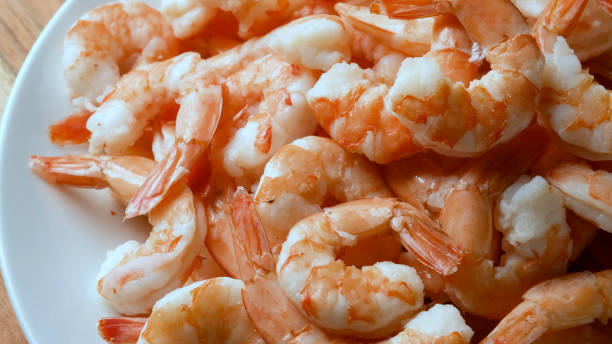Seafood Craving Fix: Eat Headless Shrimps
When it comes to flavor, there are few seafood selections that can compete with shrimp. But what if you're looking for something off the beaten path? This is where headless shrimp come in handy. This dinner has all the shrimp flavor without the messy heads. In this post, we will go over the different advantages of eating headless shrimp and why it is an excellent choice for any seafood aficionado. Discover what makes this seafood product unique in the following sections.
Why Is a Shrimp's Head Removed?
The first question you may have is why the head of a shrimp is being severed in the first place. The reason for this is that the majority of the shrimp's fat is kept in its head, causing its texture to become mushy. A headless shrimp, on the other hand, can retain its characteristic crunchy texture.
Does the flavor change after the head is removed?
Some people prefer to eat their shrimp with the head still on because they believe it adds taste to the dish. Even if this is the case, the headless shrimp is still incredibly tasty. Its flavor will be heavily impacted by the shell, which is high in natural shrimp oils. Even if the head is missing, you can still expect a delicious taste because it is these oils that give shrimp its characteristic flavor.
The Benefits of Consuming Headless Shrimp
Aside from the wonderfully crisp taste, eating headless shrimp has a lot of benefits. Among these advantages are:
- They are healthier since they contain fewer calories and less fat than shrimp with heads, albeit they may taste slightly less appetizing. Anyone attempting to lose weight or eat healthier should be quite happy to hear this.
- They're cleaner: There's no denying that eating shrimp with the head on can be messy. You can have a mess to clean up if the head comes readily apart from the body. By utilizing headless shrimp, you can completely prevent this issue.
- They're simpler to consume: The fact that headless shrimp are considerably simpler to eat is another benefit. This is particularly helpful when presenting shrimp to young children or anyone who might find it challenging to consume shrimp with the head still on.
- They cook more quickly because the head is removed, resulting in a more effective preparation. Given that not everyone has a lot of time to spend in the kitchen, this can be a huge advantage. A scrumptious shrimp dinner is ready to eat after only a little time in the pan.
How to Remove a Shrimp's Head Correctly
If the shrimp's head is to be removed, it must be handled with care before cooking. To avoid being stabbed by the sharp tails, head each shrimp individually.
Even while shrimp can be easily headed, the process can be unpleasant. Because of this, selecting a proper workspace is critical. You can keep the shrimp contained in the sink with a colander while peeling them. Prepare some paper towels or dishcloths to clean up any spillage.
Hold one shrimp firmly in your dominant hand. As you grip the shrimp, you want the body to slant in your direction. Insert your index finger, bent in half, between the shrimp's gill plates. Alter the position of your thumb.
Your free hand should be firmly gripping the head. It is also critical to place your thumb and forefinger on opposing sides of the gill plates. Break off the head and remove the black digestive tube in one swift movement.
Continue with the remaining shrimp in the same manner, discarding the heads if you are not making shrimp stock. Before boiling, thoroughly rinse the shrimp with their heads removed.
Cooking Techniques for Headless Shrimp
Shrimp without heads, like other types of seafood, can be prepared in a variety of ways. The three most frequent methods are boiling, frying, and grilling.
Boiling shrimp is one of the quickest and simplest ways to prepare them. You only need a saucepan of water and some seasonings. You can also add spaghetti or vegetables to the saucepan. If you're in a hurry or don't want to deal with a lot of cleanup, boiling is a great option.
Frying is another popular way to prepare shrimp. This method produces tastier food, but it takes longer and creates more mess. If you chose to cook your shrimp, use a little oil to keep them from becoming excessively oily.
Grilling shrimp is a great way to add flavor to your meal. Grilled shrimp will have a nice char that can be wonderful. To keep them from becoming tough and rubbery, don't overcook them.
Whatever manner you chose to prepare your headless shrimp, they will be a delightful and nutritious addition to any recipe. Pick up a few pounds the next time you're at the grocery store and give them a try. You may be surprised at how much you enjoy them.
Check out this blog post from Seafood Empire to know more about headless shrimp, it's benefits, and ways to prepare it: https://seafoodempireco.com/why-headless-shrimp-is-a-great-way-to-get-your-seafood-fix/


